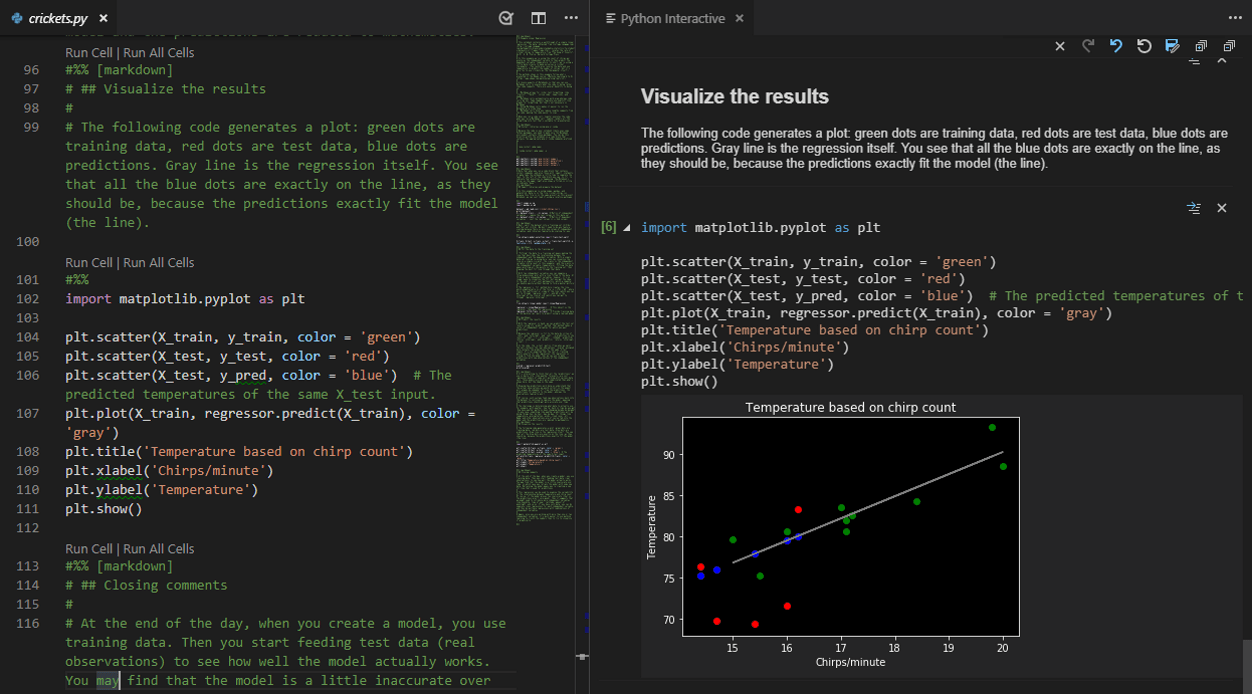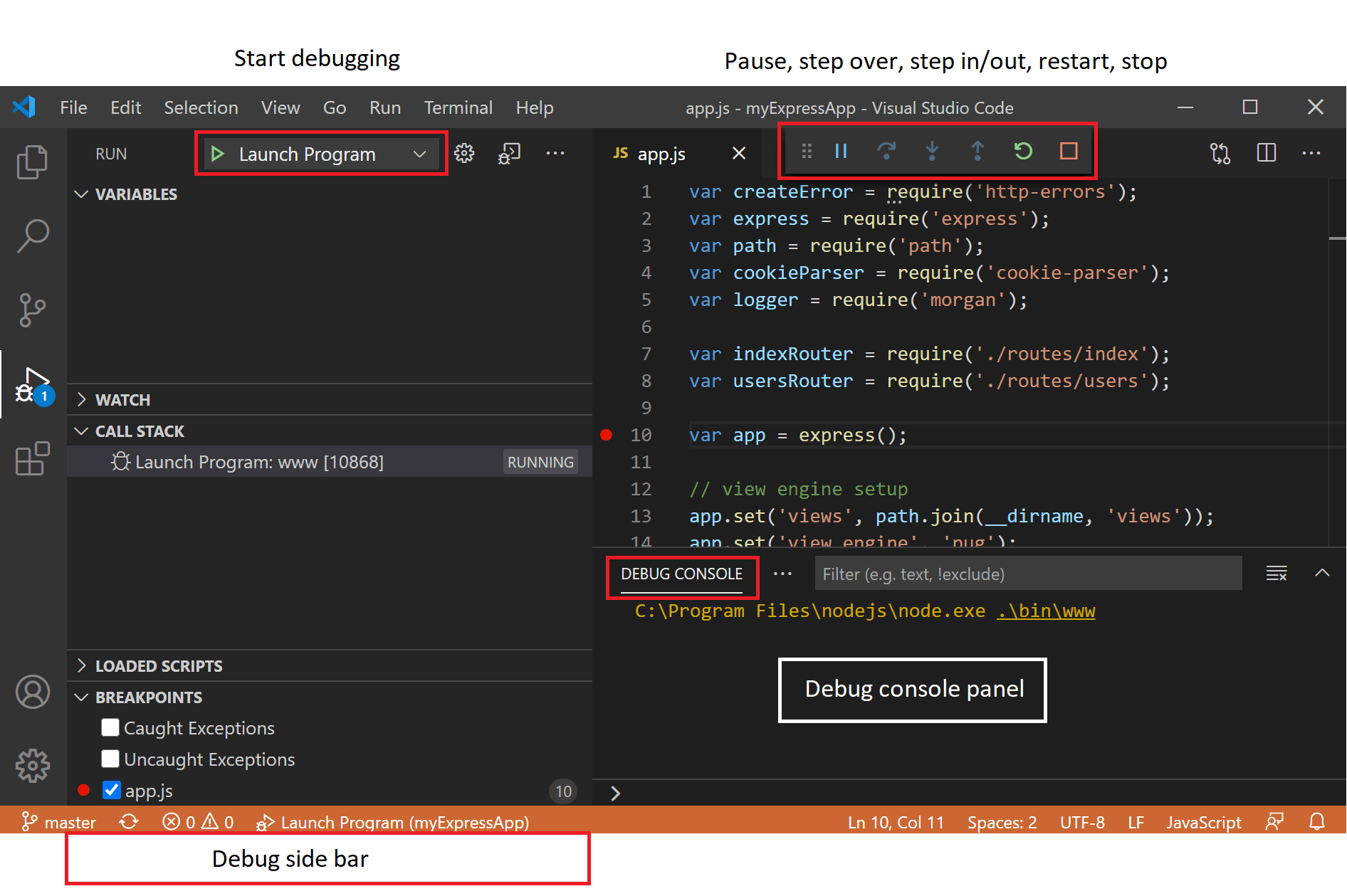

- #VISUAL STUDIO CODE DEBUG PYTHON WITH ARGUMENTS HOW TO#
- #VISUAL STUDIO CODE DEBUG PYTHON WITH ARGUMENTS INSTALL#
- #VISUAL STUDIO CODE DEBUG PYTHON WITH ARGUMENTS SOFTWARE#
- #VISUAL STUDIO CODE DEBUG PYTHON WITH ARGUMENTS SERIES#
- #VISUAL STUDIO CODE DEBUG PYTHON WITH ARGUMENTS DOWNLOAD#
Let's take a look at our application to see if we can figure out what is going wrong.

When an unhandled exception occurs, it can be easy or hard to understand the cause and source of the exception. For now, all you need to know is that an unhandled exception is an error condition that indicates something is wrong in your application and stops the execution of the application. We'll talk about throwing and handling exceptions in much more detail later on.

NET won't allow a faulty application to continue running. An unhandled exception will eventually crash an application, bringing the execution of the application to a screeching halt.

If the exception is not handled by the application, then it is an unhandled exception. If the exception is handled by the application, then the error condition can be resolved and the application can continue executing. When an exception is thrown, the application has an opportunity to handle the exception. An exception is an exceptional situation that usually indicates an error condition has occurred. NET Runtime will force your application to throw an exception. NET Runtime detects that your application is trying to do something obviously wrong at runtime, then the. If your application was able to do something obviously wrong, then there is a chance that it could corrupt data on the machine or do some damage to the machine itself. It is also responsible for making sure that your application doesn't do anything obviously wrong. NET Runtime is responsible for making sure that your application has enough resources to run correctly. NET Runtime is responsible for managing your application as it runs on a machine. Let's talk about what this means quickly. In the last part of the series, we discovered that if we run our application without any arguments, the application crashes with an unhandled exception. Let's start off with a quick recap of where we left off. By the end of this post, you will be comfortable debugging applications in Visual Studio Code, and our application will once again be in a stable state.
#VISUAL STUDIO CODE DEBUG PYTHON WITH ARGUMENTS HOW TO#
In this part, we will learn how to use Visual Studio Code to debug an application. After making some updates, we tried to run the application without passing in any arguments and discovered that the application crashed with an unhandled exception.
#VISUAL STUDIO CODE DEBUG PYTHON WITH ARGUMENTS SERIES#
You can find that part along with all other previous parts of the series here.Īt the end of the last part, we discovered a bug in our application. In the last part of the series, we learned how to create an interactive C# application by taking arguments at runtime and updating the output of the application based on those arguments.
#VISUAL STUDIO CODE DEBUG PYTHON WITH ARGUMENTS SOFTWARE#
If everything is working correctly, a menu will appear with various Go language related entries.Welcome back to another edition of C# From Scratch, a series of articles designed to teach you everything you need to know to use the C# programming language to create software applications. In this last step, we need to create a custom VS Code launch.json to tell the VS Code how to launch and debug our Go code.įirst, in VS Code, use “Open folder” command and select the folder where your *.go exist:Īfterwards, click on the debugger icon and then on the drop down (next to the DEBUG menu) and choose “Add configuration”: If everything goes fine, then the debugger (dlv.exe) should have been installed here: %USERPROFILE%\go\bin\dlv.exe Step 3 – Configuring VS Code with the Delve debugger
#VISUAL STUDIO CODE DEBUG PYTHON WITH ARGUMENTS DOWNLOAD#
On Windows, you can follow the installation instructions from here: īasically, the installation step instructs Go to download the package: go get -u /derekparker/delve/cmd/dlv Step 2 – Installing Delve (Go debugger)ĭelve is a Go language debugger. Press the “Reload” button once the extension is installed.
#VISUAL STUDIO CODE DEBUG PYTHON WITH ARGUMENTS INSTALL#
If you did not install VS Code before, install it from here: įrom inside VS Code, install the Go language extension by clicking on the extensions icon and then searching for “Go” and installing it. Step 1 – Installing the Go language supportįirst, install the Go language on your computer from here: In this blog post, I am going to illustrate how to set up VS Code in order to debug source code written in the Go language. It is a powerful editor that is highly configurable and customizable (with extensions). Not long ago, Microsoft released a new free editor called VS Code. Microsoft’s Visual Studio is my favorite IDE. If you are like me, then you like to be able to write code and develop both from the same integrated environment.


 0 kommentar(er)
0 kommentar(er)
